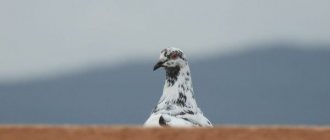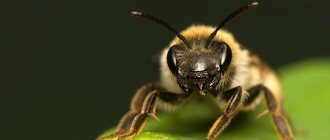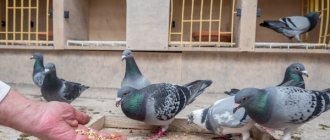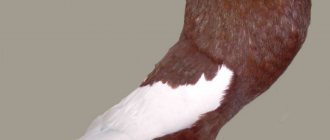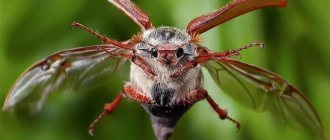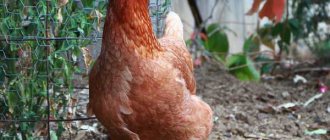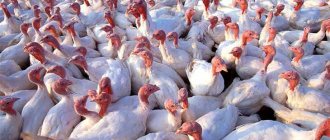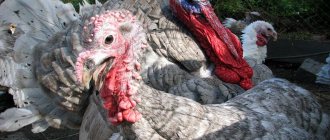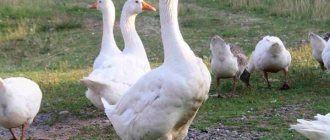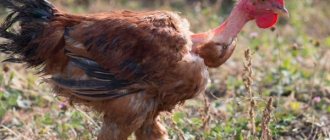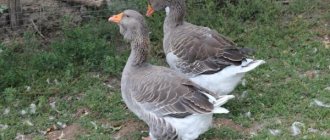The Armavir breed of short-beaked pigeons was bred by Kuban breeders. In the process of work, individuals with a shortened beak were used. They were brought to Armavir from Samarkand, Tashkent, Andijan. The specialists were faced with the task of obtaining a breed of birds with a certain stable exterior and excellent fighting qualities. Currently, birds are in demand among pigeon breeders. They are entered into competitions, where not only the external characteristics of the breed are assessed, but also their flight patterns and wing fighting. What features does the bird have?
Armavir short-billed pigeons
Origin story
Armavir pigeons were bred in the 18th century and named after the city of Armavir. It was there that people from different regions first saw unusual short-beaked birds with slightly feathered legs, which were later taken up by specialists.
As a result of targeted selection over a century and a half, birds with excellent flight characteristics and an original appearance were obtained.
During the Great Patriotic War, Armavir pigeons were endangered. It was possible to preserve the bird population only thanks to the tireless work of specialists. Currently, this small breed is bred mainly in the North Caucasus region.
Features of reproduction
The pigeon is a bird that chooses a mate for the rest of its life, so it is very important to keep an equal number of females and males in one enclosure so that normal pair formation occurs during the mating season. The short-beaked variety of Armavir pigeons cannot fully care for the chicks on their own, which is due to a natural feature - a short beak, so they are unable to properly feed the chicks. To avoid possible problems, the eggs of the chicks are placed with other breeds of bird feeder pigeons.
Appearance
Armavir pigeons are strong, harmoniously built birds with long legs and a proud posture.
According to the current standard, they must comply with the following description:
- The head is small, round, broad-browed, with slightly bulging, as if surprised, eyes. The color of the iris depends on the color of the plumage. White individuals have black eyes. The rest have a gray iris.
- The beak is white, wide, short, slightly curved. Located at an obtuse angle to the forehead line. Males have a beard under their beak.
- The tongue is small, shaped like a spatula.
- The body is elongated, slightly directed forward, with a wide back, developed chest and a short, straight neck.
- The tail is straight with a dozen tail feathers.
- The wings are elongated, muscular, tightly pressed to the body.
- The limbs are long and feathered.
- The color can be red, gray, chocolate, black, yellow or white.
Interesting! At birth, the chick has a long beak and tongue. Only after molting does the pigeon’s beak acquire the dimensions characteristic of representatives of the Armavir breed. The bird bites off its tongue so that it fits in its mouth. That is why it is characterized by the shape of a blunt spatula.
Andijan
They are distinguished by their amazing appearance and amazing flight qualities. They cannot be confused with other species, since their characteristic feature is their color and long feathers on their legs. For the first time such a pigeon appeared in Andijan, one of the cities of Uzbekistan. Through selective selection, it began to look exactly as all poultry farmers now know it.
Externally, Andijan pigeons are distinguished by their medium size and dense body. There is a neat forelock on the small head. Eyes, as a rule, are expressive and have different shades - from white to steel. The neck of a bird of this fighting breed is quite dense and goes into a sloping chest. Long wings are gathered at the tail.
A distinctive feature of the breed is the “braids” on the paws, which resemble flared trousers.
Andijan pigeons are valuable not only for their unusual appearance, but also for their amazing flight qualities. As a rule, they can fly tirelessly for 4 to 8 hours, feeling light and free in the sky. And these individuals can also be winged “postmen”, since they can easily move over long distances.
Varieties
The breed is divided into 2 types:
- Armavir short-billed pigeons. Distinctive features of these birds are solid-colored feathers and a rounded head with a steep, wide forehead. Short-billed kosmachi may have a forelock.
- White-headed kosmachi. Representatives of this species are easily recognized by their elongated head with a flat crown. It may have a shell-shaped forelock. The plumage of white-headed kosmachi has a pattern of a combination of white and black, coffee, red or yellow.
On a note. The Armavir pigeon is considered a fighting breed. When flying, the bird makes characteristic flapping or clicking sounds with its wings, which are called “fight”.
Features of reproduction
A dove is a bird that chooses a mate for life. Make sure that there is an equal number of males and females in the enclosure or cage to allow full pair formation during the mating season. The short-billed pigeon of Armavir is not able to independently provide full care for hatched chicks. The natural feature of this species (in particular, the short beak) prevents the provision of adequate nutrition to the chicks. You will need the help of poultry farmers or bird feeders of other breeds.
Conditions of detention
Armavir pigeons are considered elite birds. They are not designed to live in cramped cages and closed enclosures. Lack of freedom negatively affects the flight performance and reproduction of livestock. Therefore, they need to be kept in spacious houses with the opportunity to make training flights.
For a comfortable stay, there should be 1.5 m2 of space per bird. The plastered walls of the poultry house are treated with whitewash, and the floor is covered with litter, the thickness of which is at least 6 cm. Smooth perches must be placed inside the room.
The house itself must be kept clean. To prevent the development of diseases, it is disinfected monthly, which consists of:
- from mechanical cleaning with a scraper;
- wet cleaning with a hot solution of caustic soda;
- treatment with aerosols or a blowtorch.
Flight features of Armavir short-billed pigeons
Birds fly gracefully and very smoothly. Whoever sees it will no longer look away. Pigeons can be seen in solitary flights and in flocks due to their well-developed autonomous and gregarious instincts. Birds are characterized by fighting, with an exit into the pillar. Individuals are highly trainable.
Systematic training helps improve flight qualities and teach various commands. Flight capabilities correspond to the following characteristics:
- Individuals have a unique flight style.
- They conquer heights from 50 to 100 meters.
- The average flight duration is from 45 to 90 minutes.
- The height of the entrance to the vertical column is 10 m.
- The number of completed revolutions is from 2 to 9 pieces. The flight style and training of the individual influences.
The manner of movement during the flight is calm and easy. The fight is loud and dry. Pigeons are not often released for free flight. Representatives of the breed can demonstrate the quality of fighting upon reaching 2-3 years of age. First of all, the young animals ride on their tails, and only then do the first flights take place.
Short-billed pigeons are specially placed on a pin to avoid early flights. Breeders trim the flight feathers or attach them with a pin. This helps young individuals to train without the risk of falling and death.
The best effect is achieved when racing in a small flock. At the same time, the best flyers are sent flying with a hand throw. The pigeons immediately go “into the pillar”, making sharp, rapid turns. There are individual specimens that can show battle up to 20 times when reaching a high column. Sometimes they are difficult to see - they disappear from view. At maximum altitude, individuals play less often in order to conserve strength.
About
Feeding
Armavir pigeons are undemanding when it comes to nutrition, but a poorly balanced diet can cause vitamin deficiency and digestive problems. These birds can be fed special mixtures of millet, lentils, barley, corn, oats, peas and wheat.
In the warm season, representatives of the breed are recommended to be given crushed leaves of cabbage, spinach, dandelion and nettle daily.
On a note. Armavir pigeons must receive food twice a day. The average daily feed rate per bird is 40 g. In the morning, birds are given about 10 g of food, the rest is poured into the feeder in the evening.
To normalize the functioning of the digestive system, there should be dishes with fine gravel in the room where Armavir pigeons are kept.
Birds' drinking bowls should always have fresh drinking water. In order for the chlorine to evaporate from the liquid, it must first be settled for 12 hours.
Armavir pigeons are beautiful birds that are valued not only for their interesting appearance, but also for their good flight qualities. They are an elite fighting breed and require regular training flights.
Fighting beauties - Andijan, Armavir and Blagodarny pigeons
Many poultry farmers prefer pigeons to all other bird species. Why? In addition to their aesthetically attractive appearance and variety of breeds, pigeons are distinguished by many other advantages: unpretentiousness, the ability to survive in any conditions and beautiful flight. What beautiful pigeons these Armavir short-billed, Blagodarnensky, Andijan pigeons are... Let's talk about them in more detail.
Read also: What are the benefits of lavender - 12 beneficial properties of lavender and its uses
Video "Beautiful Bird"
Poultry house
If the birds are kept in a poultry house or other premises, then they are equipped with smooth perches. The walls are plastered and treated with whitewash. Lay bedding 6 cm or more thick on the floor.
For a pigeon to feel comfortable, it needs personal space. There should be 1.5 square meters per bird. m.
Pigeons are unpretentious in terms of care and maintenance, but to prevent the development of diseases, the poultry house is disinfected monthly.
Before carrying out this procedure, the room is cleaned of droppings, fluff, and dirt using a scraper. Then the room is washed with soapy water and treated with a blowtorch. This allows you to get rid of pathogens even in the most difficult to reach places.
In warm weather, complete disinfection is carried out - a set of measures aimed at thoroughly treating the room from various insects, microbes and viruses.
It includes:
- mechanical cleaning;
- wet cleaning;
- aerosol treatment.
During mechanical cleaning, armed with a scraper, they clean walls, floors, drinking bowls, feeders and perches. Next, all objects and premises are washed with hot water, adding caustic soda to it. After wet cleaning, the dovecote is ventilated and dried.
The last stage is treatment with formaldehyde vapor. To do this, for 1 cubic. meter take 45 g of formaldehyde, 30 g of potassium permanganate and 20 ml of water. All components are mixed in a ceramic container in the poultry house.
When mixed, a chemical reaction occurs, resulting in the formation of a gaseous substance.
Leaving the container inside the room, close all windows and doors tightly and leave for 2 hours. After treatment, the room is well ventilated. Vapors penetrate into all cracks and do not give any microbe a chance to survive.
To prevent the formation of mold and mildew, regularly ventilate the dovecote in warm and dry weather.
Diseases and vaccinations
Vaccination is necessary for birds to increase their immunity to diseases and prevent epidemics from developing. It is carried out at the beginning of spring and autumn, that is, when there is a sharp change in weather and fluctuations in ambient temperature.
Vaccinations are done with a minimum interval of 10 days, that is, having injected one, the next one can be done only 10 days later.
They are often vaccinated against salmonellosis and Newcastle disease. If only the lazy have not heard about salmonellosis, then the second disease is little known to most of the population.
Beginning pigeon breeders should know that Newcastle disease or “whirling pigeon” is a viral disease spread by air. More than 2 thousand individuals die from it every year.
The virus kills the bird's nervous system and affects all internal organs. At the last stage, the bird constantly turns its head, its neck becomes bent and inflammation of the brain is diagnosed.
The disease spreads quite quickly among the livestock, and the wind spreads the virus over long distances. Prevention has proven itself in the fight against this disease, so it is better to play it safe and get vaccinated in a timely manner.
Tbilisi pigeons
This variety of North Caucasian pigeons is not considered too popular and is found among few collectors. Most often, only Georgian breeders breed Tbilisi birds.
There are no breed standards yet, although it is common for Tbilisi birds to have feathered limbs and a large forelock on the head. Feather colors are different:
- gray,
- white,
- black,
- yellow.
The flight qualities of Tbilisi birds are quite high. Like most North Caucasian birds, they can enter a high straight post and make a series of somersaults. Pigeons are not distinguished by loud fighting, although the clicks are rhythmic and necessarily accompany every trick in the air.
Russian White Cresteds in boots
The great-great-grandchildren of these pigeons can still be found today at pigeon markets in our country. Currently, they are simple in appearance and head, and there is no fashion for them; These pigeons are not an acquired taste. They fly in circles at medium altitude, do not fly for long, do not tumble, but they are attentive and caring parents.
Based on these whites, in the 80-90s of the last century, Moscow pigeon breeders, led by Yu.S. Blistanov, mating them with Altstemmers and Königsberg short-billed ones, created a new breed of whites with feathered legs. A big fan of the newly created breed is Fyodor Borshchev, a resident of the town of Balashikha near Moscow. The pigeons turned out to be of medium size or slightly larger, with medium-height legs, and quite large head (in relation to our previously mentioned short-beaked breeds), with a crest “from ear to ear” and small feathering on the legs, In a word, the pigeon turned out to be spectacular. Fans of short-beaked birds became interested in these pigeons, they aroused genuine interest, today this breed is not widespread, but its future is still ahead. In 1994, the Moscow Pigeon Club developed a draft standard for this pigeon.
Breed standard for Russian White Crested with boots
Appearance - medium in size, feathered legs of medium height, well built. The head is quite large, cubic in shape, with a large face. The forehead is very high, sloping down steeply. On the back of the head there is a high and wide forelock, which is located closer to the top of the back of the head. The eyes are large, slightly bulging, with a tear, dark cherry color, located in the center of the head. The beak is thick, short, like a continuation of the forehead, white, with a small white wax. Its tip is slightly curved towards the bottom. The neck is of medium length, very strong, thick, slightly curved. The chest is round, wide, and protrudes slightly forward. The back is quite wide, of medium length or slightly elongated, and has a slight slope towards the tail, with which it forms an almost horizontal straight line. The wings are of medium length, not very close to the body, their ends are located on the tail or slightly lowered. The tail is of medium length, not wide, consists of 12 feathers. The legs are of medium height, closer to short, the metatarsus is feathered, the toes are not feathered (in panties). Fingers of medium length, white claws. The feathering of the heel and shin leaves a pleasant impression. Color and pattern of plumage - the plumage is smooth, shiny and glossy, fits tightly to the body, white. There is no picture.
Acceptable shortcomings - underdeveloped crest, feathered legs; slight deviation in proportions (short body, neck); medium sized eyes; rough eyelid; small sized head. Unacceptable faults - narrow and low forehead; very small head and eyes; elongated and thin beak with improper fit; different eyes, eye color other than dark; pink or yellow eyelid; improperly formed crest (crooked, candle or very low set); weakly feathered high legs or lack of feathering on them; curvature of the keel and chest; absence of more than two claws on one leg; the presence of feather decoration on the chest and wing scutes; very loose plumage; the presence of colored feathers on the body and tail. Sometimes today at bird markets in different parts of Russia you can find white crestless pigeons with feathered legs, created at the end of the twentieth century by Moscow pigeon breeders; they look impressive and attractive.
Persians are curly
These pigeons are considered the progenitors of many breeds, because the Persians were bred on the territory of Ancient Persia. Over the centuries, the appearance of birds has changed significantly, as breeders have tried to improve the innate characteristics and add new features to the breed.
The pride of the Persians is the long plumage covering the limbs. In the best representatives of the variety, it can reach 15 cm. Persians also have a forelock, which is usually sharp and resembles a peak.
Curly-haired Persians got their name from their distinctive feature – the cut tips of their feathers. The plumage resembles small curls, and it is this curliness that is considered the main value of the breed.
The plumage color of Persians can be anything from snow-white to blue-black. Color-sided or color-tailed pigeons are also allowed. The forelock must be the same color as the plumage of the head.
Persians can also boast of flying qualities. They can stay in the air for up to 14 hours, quickly covering vast distances.
Experts say that in terms of the loudness of the fight, the height of the pole and the frequency of tricks, no fighting breed can compare with the Persians.
Russian white crested tumblers
This pigeon is gentle, graceful, elegant, with harmonious shapes and looks more like a seagull than the Oryol white. The breed was formed on the basis of the Oryol White, Pakhovsky, and Russian Gulls.
Breed standard for Russian White Crested Tumblers
Appearance: bare-legged, small in size, delicate, graceful, with proportional body shape, short-beaked, with a crest.
Head - has the shape of a cube (width, length and height are equal). Eyes - large, expressive, dark brown; the eyelid is thin; the periocular ring is wide, delicate, flesh-colored (closer to white), without coarse growths or inclusions of a different color. The beak is very short, thick, blunt, flesh-colored, tightly closed, with a “death”; the wax is tender, white (without a powdery coating), heart-shaped on top, slightly swollen. The neck is of medium length, full, thickened, set vertically, smoothly merging into the forearm. The chest is quite wide, well defined, raised. The back is not wide, with a slight slope towards the tail, the stance is horizontal, with a raised chest. The wings are of medium length, their ends are located on the tail or slightly lower. The tail is wide (collected), horizontal, consists of 12 feathers. The legs are small, red, with small toes, low, unfeathered, the claws are white. The color and pattern of the plumage is dense, white, without any extraneous color shades. The structure of the plumage - the crest (crown) is located below the back of the head, dense (without gaps), has side rosettes, located from ear to ear. Exhibition condition - the bird must be clean, the feathers must be shiny and glossy.
Acceptable faults are an underdeveloped crest, slight deviations in proportions (shortened body, neck), rough eyelids. Unacceptable faults - narrow and low forehead; elongated, thin and curved beak; discord; light eyes; pink eyelid; irregular crest (crooked, candle); colored feather in the pigeon's back; high legs and their feathering; curvature of the keel, chest and limbs (legs, fingers, wings); the absence of two or more claws on the male’s leg; the presence of feather decoration on the chest and legs.
